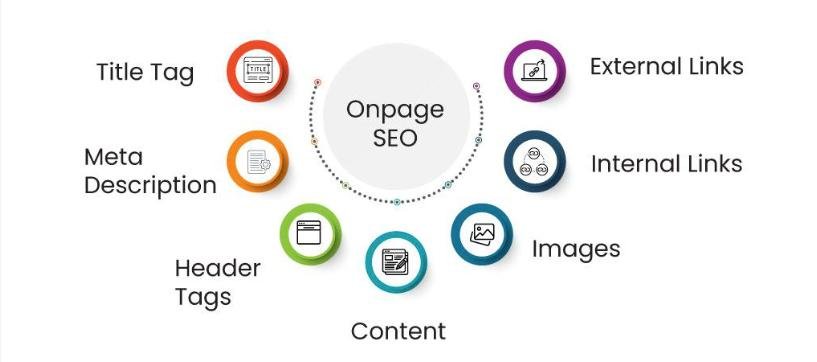
What is On-Page SEO? A Beginner-Friendly Overview
On-Page SEO (also called on-site SEO) refers to the practice of optimizing individual web pages to rank higher in search engines and earn more relevant traffic. Unlike off-page SEO (like backlinks), on-page SEO deals with everything within your website.
🔑 Key Elements of On-Page SEO
1. Title Tags
- Appears in search results as the clickable headline.
- Should include your main keyword.
- Keep it under 60 characters.
✅ Example: Best Running Shoes for Beginners | 2025 Guide
2. Meta Descriptions
- Brief summary below the title in search results.
- Use keywords and a call to action (CTA).
- Aim for 150–160 characters.
3. Headings (H1–H6)
- Use only one H1 per page (usually the title).
- Use H2, H3 for structure and keyword-rich subheadings.
4. URL Structure
- Keep URLs short, readable, and keyword-based.
✅ Example: /on-page-seo-guide
❌ Avoid: /page?id=1234
5. Keyword Optimization
- Naturally include your target keywords in:
- First 100 words
- Headings
- Image alt text
- Anchor text (internal links)
⚠️ Avoid keyword stuffing.
6. Internal Linking
- Link to other relevant pages within your site.
- Improves site structure and user experience.
7. Image Optimization
- Use descriptive filenames and alt text.
- Compress images for faster load times.
8. Mobile Friendliness
- Ensure your website is responsive and easy to use on phones and tablets.
- Google prioritizes mobile-first indexing.
9. Page Speed
- Fast-loading pages rank better.
- Tools like Google PageSpeed Insights can help identify issues.
10. Content Quality
- Unique, relevant, and engaging content is king.
- Answer search intent and provide value to the user.
✅ Final Tip:
On-page SEO isn’t a one-time task—it’s an ongoing process of updating, improving, and aligning with both user needs and search engine changes.

SUPER